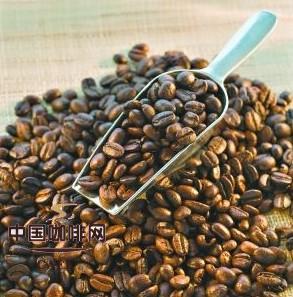Roasting knowledge of coffee beans roasting of coffee is realized in three stages.

Soft, silky Colombia coffee, unique aroma, slightly sour blue mountain coffee, syrup and chocolate flavor, balanced aroma of Indonesian coffee... More than 50 countries around the world produce more than 3000 kinds of coffee beans every year, so, if the origin of the standard, in many choices to choose the most suitable coffee is really not easy. Some experts believe that the roasting of coffee beans has a more direct impact on the taste of coffee. Understanding the different tastes and flavors that different types of roasting bring to coffee is undoubtedly a "shortcut" to choosing your ideal coffee.
Coffee roasting is accomplished in three stages. In the light baking stage, when the beans emit the first soft sound, the volume expands and the color changes to cinnamon. Acidity dominates the flavor of light baked beans, texture and taste are not fully developed. At the medium roast stage, 10 to 11 minutes into the roast, the beans take on an elegant brown color. This method of baking is also called city roast. Medium roasting preserves the original flavor of coffee beans and releases aroma moderately. Deep roast, coffee fat began to surface, beans were burned by the fire to a bright dark brown, the darker the color of coffee beans, the sweeter the flavor, then the fat has become caramel, bitter to sweet, endless aftertaste.
Starbucks coffee roasting master Doug Langworthy introduced, and in the past simply from the origin to distinguish products, according to the depth of baking to distinguish products, can let consumers more "at a glance" to choose their favorite taste. "Different baking methods will bring very different feelings, consumers can easily choose more suitable products according to their own preferences."
Different baking methods create personality
"Light baked, mellow, light in flavor, subtle and rounded. Medium-roast coffee is medium-bodied, balanced and smooth in flavor; deep-roast coffee is rich and thick in purity, rich and intense in flavor." The effect of different roasting methods on coffee flavor is particularly evident.
Light fried coffee beans are usually light brown, will have a strong smell, very crisp, with a slight alcohol, high acidity is the main flavor. Medium-fried coffee beans are light brown in color and have a strong alcohol content, while retaining most of the acidity. Deep-fried coffee beans have turned dark brown, often with a layer of shiny oil on the surface, acidity replaced by a slight burnt bitterness to produce a spicy taste. Some of the extra deep-fried coffee beans even contain a bitter taste of charcoal ash, which is significantly reduced in alcohol.
"Different roasting methods can make very well-balanced and excellent coffee." Doug Langworthy said that in fact, different roasting methods can only represent different personalities and styles of coffee, just like different personalities of people, but there is no difference between good and bad. Doug Langworthy himself has a soft spot for Starbucks 'light-roasted "golden roast coffee." "I like that kind of soft touch. Professional coffee roasting is a personal expression of the master."
Find your favorite by smelling, inhaling and tasting
Just as wine requires certain skills and methods, coffee requires various necessary steps. To know how to choose the type of baking that suits you, you first need to know how to "taste" to distinguish the different feelings brought by different baking types.
The first step is "smell." Smell and taste are actually directly interlinked, and when people judge whether food is delicious, they often start with smell. At the same time, differences in taste can already be detected among different types of roast coffee. Lightly roasted coffee has a sweet and balanced aroma; medium roasted coffee has the most "coffee" feeling, mellow and layered. At the deep roast, the smell is rich and there is a distinct "sweet" and "slightly burnt" feeling.
After getting an initial impression of the different types of baking from the smell, you can move on to the second step of the tasting: sucking. This is also the full use of nasal and taste buds, so that smell and taste work together. Take a big sip of coffee and let the flavor rush straight into your nose. You can directly and strongly feel the aroma of this roasting method and further verify the feeling of the first step of "smelling". Through this "smell" and "suck", the three types of coffee must have a fresh outline and personality in your mind.
Of course, knowing what you really like has to start in more detail. So, the third step is the sipping phase. Put the coffee into your lips and sip it carefully. Let the coffee flow slowly from the inside of your lips to the tip of your tongue and then slowly to the middle of your tongue. Let the taste buds in different parts feel the fine layers of coffee. At this point, if your tongue is sensitive enough, you can distinguish some berry aromas and sweetness that may appear in light baking, chocolate and cinnamon that may appear in medium baking, caramel flavor that may appear in deep baking, spice flavor and a little bitter... Of course, these details vary greatly, but through the three-step tasting, you can more clearly find the type of taste you want.
Important Notice :
前街咖啡 FrontStreet Coffee has moved to new addredd:
FrontStreet Coffee Address: 315,Donghua East Road,GuangZhou
Tel:020 38364473
- Prev

The benefits of drinking boutique coffee give you a good memory
Dr. Ritchie's research published in the American Journal of Neurology shows that drinking more than three cups of coffee or tea a day can help older women retain their memories. Dr Ritchie and others of the French National Center for Health and Medical Research completed the new study. They asked about 7000 elderly men and women with an average age of 74 in Bordeaux, Dijon and Montpellier how many cups of coffee and tea they drank every day.
- Next

Common mistakes and suggestions on drinking coffee
Mistakes: 1 drink a cup of coffee for a few hours, drink hot coffee until cold, iced coffee drink cold; 2 scoop cappuccino milk foam; 3 stir, put spoon in the cup; 4 drink single coffee without trying, just add sugar and milk. Suggestion: 1. Coffee worth tasting, can experience different flavor performance of coffee at different temperatures; other coffee, especially coffee with milk should
Related
- Beginners will see the "Coffee pull flower" guide!
- What is the difference between ice blog purified milk and ordinary milk coffee?
- Why is the Philippines the largest producer of crops in Liberia?
- For coffee extraction, should the fine powder be retained?
- How does extracted espresso fill pressed powder? How much strength does it take to press the powder?
- How to make jasmine cold extract coffee? Is the jasmine + latte good?
- Will this little toy really make the coffee taste better? How does Lily Drip affect coffee extraction?
- Will the action of slapping the filter cup also affect coffee extraction?
- What's the difference between powder-to-water ratio and powder-to-liquid ratio?
- What is the Ethiopian local species? What does it have to do with Heirloom native species?

